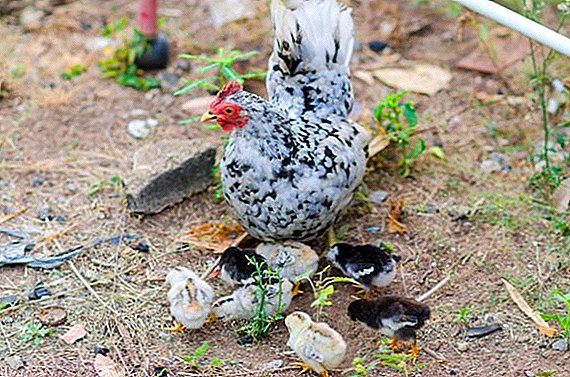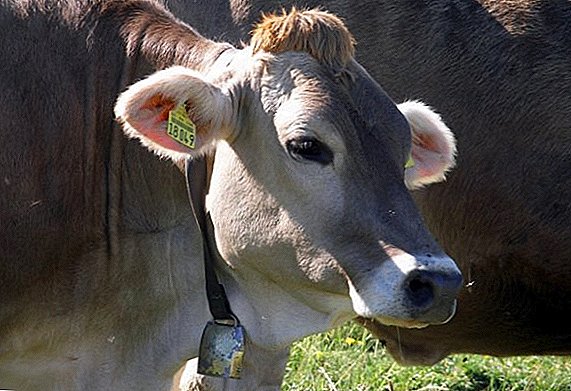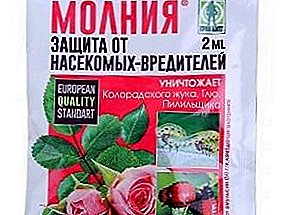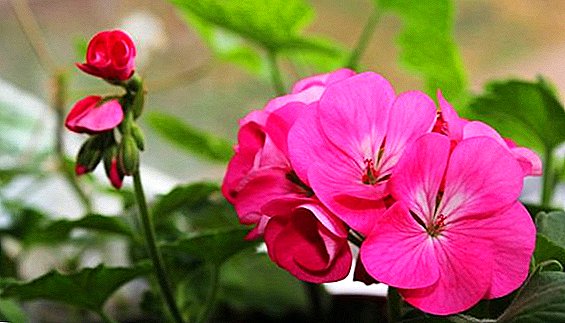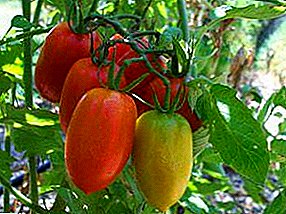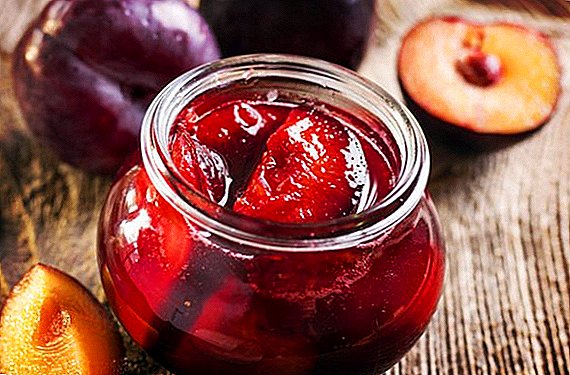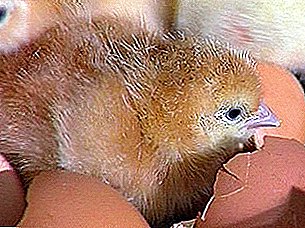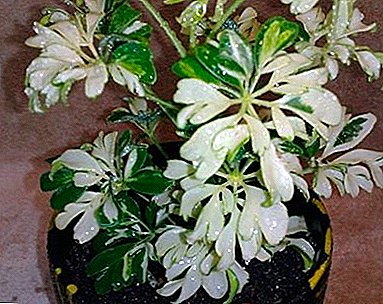
Schefflera Janine is an amazingly beautiful plant.
It can grow safely at home.
Does not require thorough additional care.
It responds well to top dressing and systematic watering.
General description of the flower
In the wild, there are about 200 different types of Schefflers. This plant is sometimes called treelike. Latin name: Schefflera Arboricola Janine. This amazing plant stands out among other representatives of the flora.
Scheffler is endowed with the most beautiful form of leaflets. They look like a rosette-like, spreading structure. And their structure resembles an amazing umbrella with the rays of the sun. The colors of the flowers are different. Sometimes it is found completely emerald, but in most cases - amber with snow-white specks.
In the sun, they get white stains in the middle of the sheet. Unfortunately, in the indoor environment, this exotic pet does not bloom. But the unusual shape and color of the leaves fully compensates for the lack of flowering. "Scheffler Janine" is one of the unmatched subspecies.
A photo
The photo shows the Scheffler Janine plant with proper care at home:




Home care
Pruning
Pruning leaves the plant does not require. It is produced only with strong growth and spreading branches. In general, pruning is done only for reproduction.
This method is perfect for grafting or propagation by air layering.
Watering
 The best moisturizing is moderate watering.
The best moisturizing is moderate watering.
If the plant is poured - it can die from a strong overflow of water.
But the plant also does not like stony dry land.
Therefore, the flower is watered as the soil dries.
A small stick or pencil is inserted into the soil.
Attention! If on the subject remained wet ground - it is worth to wait a little with irrigation.
If the pencil remains dry, the plant needs urgent watering. In winter, watering should be reduced. Especially if the plant is in a dormant period. And in hot weather watering increases.
Also, the air around the flower is additionally moistened. Perfectly suited to room temperature water and spray. Sometimes a container with a flower put on a pallet with expanded clay or pebbles.
This helps the plant to breathe more and not to rot its roots. At the same time there should be a good drainage system in the tank. Periodically exclusive leaves of a flower are wiped with a damp cloth or sponge.
Landing
For transplanting this amazing flower, use purchased ground for palm trees. Holes are drilled at the bottom of the tank. Flower need to pick up drainage. For this perfect clay, broken bricks, pebbles, gravel or finely crushed clay fragments.
The material fills the bottom of the pot by 1/4. Then the ground is poured to half the tank. In the center is a plant with a well-developed root system. Then the flower is covered with soil again. Do not compact the ground, as the soil should be loose. With dense soil, the plant does not breathe well, which affects growth and health.
Transfer
 Completely mature young flowers need transplanting.
Completely mature young flowers need transplanting.
Usually a transplant is made once every two to three years.
For this are selected large pots. Tanks should be 3-6 cm larger than the previous ones.
Transplant is made by reloading.
Since "Schefflera" reacts poorly to crushing the root system.
When handling the roots of the plant will not be affected. A full earthen ball is transferred to a new container. The root system is covered with earth to the very edges. Then "Jeanine" must be poured abundantly.
Important! From mid-spring after the snow melts and until October, the plant needs additional feeding.
During this period, "Janine" is actively growing. Therefore, every week the flower is enriched with vitamins and minerals.
Growing up
The flower tolerates a warm and humid climate. Can grow at home. Capacities can be placed on loggias, glazed balconies, greenhouses. The plant feels great on the high shelves of cabinets and window sills.
Breeding
The pet is propagated by aerial layering, purchased seeds and cuttings. In the latter case, the already old lumbering seedlings are cut with scissors. Sections are treated with resin, which easily tightens the wounds of plants.
Cuttings put for two hours in a solution of growth stimulation. After the procedure, the cuttings are immediately planted. Do not put them in the water. Perfect land mixed with humus and sifted river sand. Then seedlings covered with polyethylene, cut plastic bottle or glass container.
It is important that the capacitance passes light. Such a mini-greenhouse will serve as a reservoir in which the plant can actively grow. It is necessary to maintain a temperature of 20-23 ° C.
During propagation by seeds, tanks and soil are prepared in advance. You can use the purchased land. But this method of reproduction is rarely used.
And the probability of germination is 50:50. Seeds need to be planted only in early spring in March and April. In another period of time, they will not ascend. Planting material spread on the ground and sprinkled with soil.
Planting depth should not exceed 0.5-1.0 cm. Seeds need a home-made greenhouse, in which the optimum thermal conditions of 20-23 ° C should be constantly maintained. The temperature should not fall below 18 ° C.
 When breeding air layings, planting material grown specially.
When breeding air layings, planting material grown specially.
By itself, "Janine" does not give its layouts.
Therefore, a small incision is made on the flower stump.
Then natural forest moss is applied to it.
The place of separation is wrapped with a plastic bag.
The place and distance near it must be constantly in a humid state.
The very first processes appear in 60 days. They must be carefully cut and landed in prepared containers. The cut of the main plant should be treated with resin.
Temperature
In winter, the room temperature should not fall below 13-14 ° C. And in the summer heat, the plant should not be left for a long time at temperatures above 25 ° C. The optimum temperature of growth can vary in the range of 14-25 ° C.
Despite the thermophilicity, a long stay near the battery can adversely affect the appearance and health of the flower. Once a week the plant must be exposed to fresh air.
Lighting
Properly chosen place of growth will be the key to good and healthy development of "Jeanine". The plant does not like direct sun.
But to preserve its exotic leaf color without light can not. Therefore, a container with a flower must be installed in the penumbra, where a constant dispersed flow will fall on the Scheffler.
Benefit
"Janine" refers to the genus "Schefflera". Therefore, it is endowed with all the advantages of its progenitor. This type of plant is very popular in the West and in Europe.
Due to the unique, openwork and exotic colors of leaves, the flower looks great in all rooms. It complements the interior and attracts everyone with its unusual appearance. It also cleans the air and absorbs computer rays. From the flower comes a great calming energy.
- Bianca;
- Tree
Diseases and pests
 Plant diseases are associated with improper care.
Plant diseases are associated with improper care.
But the correct quick treatment will not affect the appearance of the flower.
If “Janine” actively sheds leaves, it means that it is subject to too low temperatures.
There may also be an overabundance of moisture.
Therefore, with such symptoms, Scheffler is transferred to a warmer and lighted place.
If dark spots have formed on the leaves, and the edges have turned brown - this is a sign of dry soil and strong drafts. The plant should be watered and rearranged in a bright room.
Root decay indicates a strong excess of water. In this case, the flower must be urgently transplanted into a new container and a new commercial soil. When spider mites, scutes or thrips appear, “Janine” is washed under running water. Leaves must be wiped with a damp sponge. In the future, you can not allow dusting the decorative leaves of the flower.
This exotic plant breeds in three ways. Not sick and not prone to pests. Loves good lighting and dressing. Even in room conditions in height reaches more than 2 meters. It perfectly cleans the air and absorbs computer rays.


